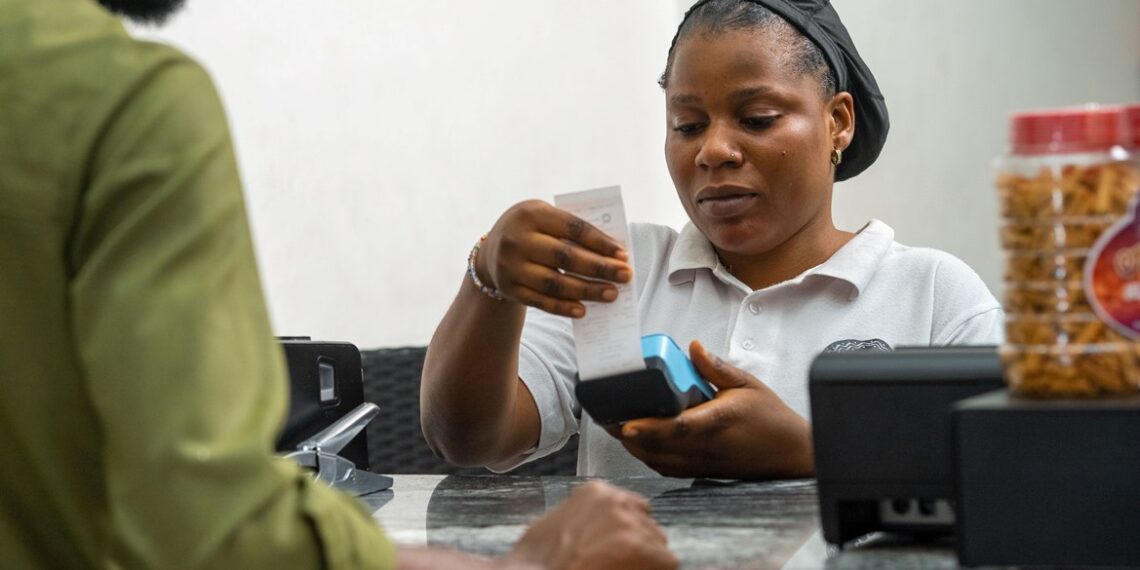Not less than 58.3 million individuals (in Nigeria) utilize banking channels or services to manage their finances.
This is contained in the latest Access to Financial Services in Nigeria (A2F) 2023 report released by Enhancing Financial Innovation & Access (EFInA).
According to the EFInA report, the individuals representing 52% of the adult population of the country reflect a marginal uptick from the 51% recorded in 2020, demonstrating a gradual but steady expansion of banking penetration across the country.
It further noted that approximately 6 million adults opened a bank account for the first time between 2021 and 2023.
However, this growth is offset by around 2 million adults who could be categorized as lapsed bank account holders, resulting in a net growth of around 4 million adults.
The report tagged “Unlocking Insight to Accelerate Financial and Economic Inclusion”, highlighted the usage patterns within the banking sector such as; person-person, and point of sales.
The usage patterns within the banking sector underscore the importance of merchant payments and person-to-person remittances as key drivers of banking product utilization of Digital platforms such as point of sale (POS) terminals in the hands of a ubiquitous, agent network, as well as mobile applications play a crucial role in facilitating financial transactions, particularly in underserved or remote areas where traditional banking infrastructure may be limited.
Thus, “by leveraging these alternative channels, banks have been able to extend their reach, improve accessibility, and enhance the convenience of banking services for a broader segment of the population, thereby driving greater financial inclusion.
Barriers to Bank Account Uptake
The eighth edition of A2F report, which extends beyond financial access and usage, provides insights into the quality and impact of financial services identifying barriers to bank account uptake.
Exploring the drivers of the lack of transactional account ownership among formally included Nigerians (indirect users via financial services agents), EFInA found that income, cost of banking, and institutional exclusion are still the major drivers for these secondary levels of exclusion.
Principally, there are two forms of exclusion explored in the A2F survey due to the nature of the Nigerian financial landscape. First is financial exclusion (no access or use of any financial services) and the second is formal exclusion (no access or use of any formal financial services).
The A2F access identifies and categorizes Nigerians into distinct groups such as; formally included without a transactional account (12.2m), informal only (10.7m), and financially excluded (28.9m).
By exploring the factors influencing these patterns, valuable insights were gained into the barriers and challenges faced by different segments of the population in integrating with formal financial institutions
According to the report, factors such as; income constraints, geographical and cost barriers, choice exclusion, preference for cash transactions were pinpointed.
Others are trust and perception issues, lack of Understanding and documentation, education and literacy challenges among others.
Nearly 50% of unbanked adults have no financial account because they lack sustainable income, in this stead, the report noted that complementary market-friendly economic policies that tackle endemic poverty through social investments in access to job opportunities, education, vocational skills, and entrepreneurship, are important to promote sustainable livelihoods and ensure a wider social impact of financial inclusion. In the same vein, a regulation that encourages the entrant of new non-bank players with sufficient incentive to design for and serve the unbanked is needed.
In terms of Geographical and Cost Barriers, access to banking services is hindered by geographical factors and associated costs, many individuals mentioned that banks are too far from their residence or workplace, and the expenses involved in reaching a bank are prohibitive, particularly notable in the “Informal only” and “Formally included without a transactional account” categories.
This explains the adoption of financial service agents or informal financial services, often embedded within the community, especially in rural or remote areas where formal infrastructure is limited. However, on the choice exclusion, being unbanked by choice contributes to formal exclusion.
Excluded Nigerians are more likely to highlight the aforementioned factors compared to other groups above.
Meanwhile, a considerable proportion prefers cash transactions, potentially due to habit or concerns about convenience and control over finances.
Furthermore, trust negative perceptions, including concerns about corruption, lack of trust in financial institutions, and previous bad experiences leading to closed accounts or fraud, also deter individuals from engaging with formal banking systems.
The report also underscores institutional barriers such as illiteracy, lack of understanding of banking operations, excessive documentation requirements, and absence of identity documents as major contributing significantly to exclusion from formal financial services.
Also vital to note were; the inability to read, write, or comprehend banking procedures presents a notable barrier to financial inclusion, especially among the excluded and informal groups of users.
While spousal influence plays a role for a small segment of the population, individuals refrain from banking due to their spouse’s preference but women make up a significant proportion of Nigerians reporting this.
The reasons behind the spousal influence can vary widely, which could stem from traditional gender roles where one partner is expected to handle financial matters, or it could be influenced by past experiences or perceptions of formal financial institutions. Additionally, lack of financial education or awareness about the benefits of banking services may also contribute to this dynamic.
Thus, addressing these multifaceted reasons for being unbanked requires targeted interventions that focus on improving income stability, reducing geographical and cost-related barriers, enhancing financial literacy, simplifying banking processes, building trust in financial institutions, and adapting services to accommodate individual preferences and circumstances.
Again, policymakers, financial institutions, and development organizations can leverage these insights to design more inclusive and accessible financial services tailored to the diverse needs of unbanked populations.






